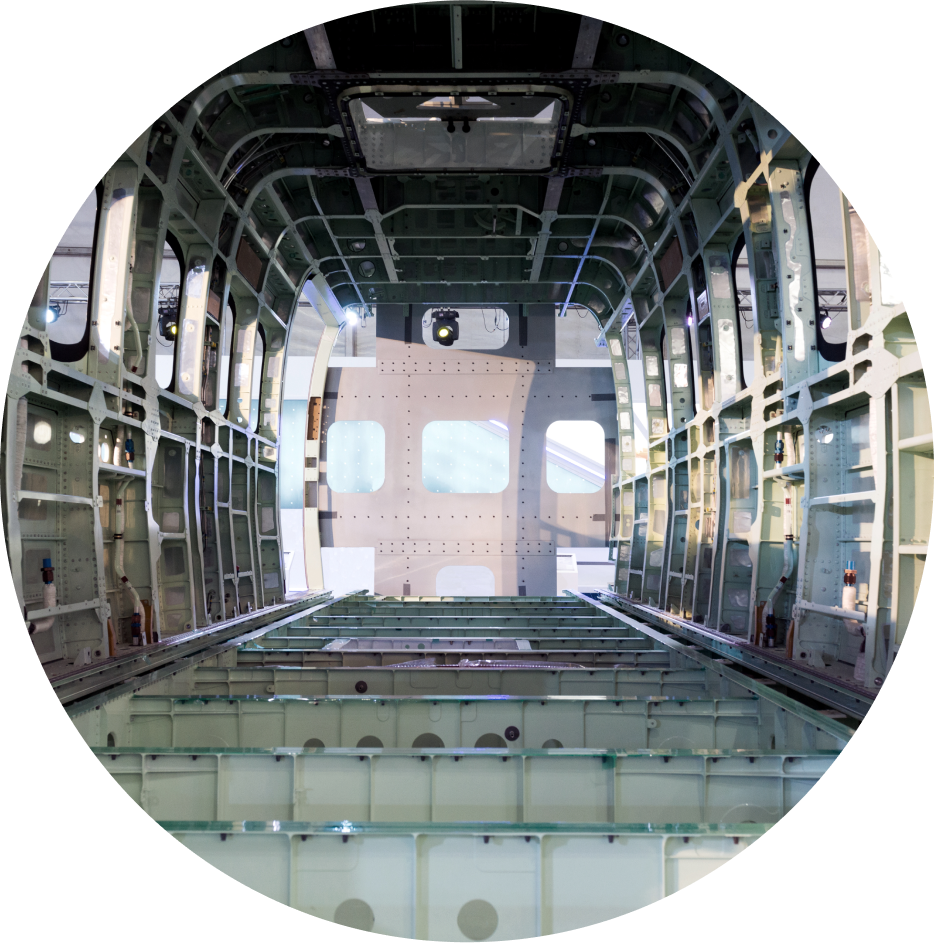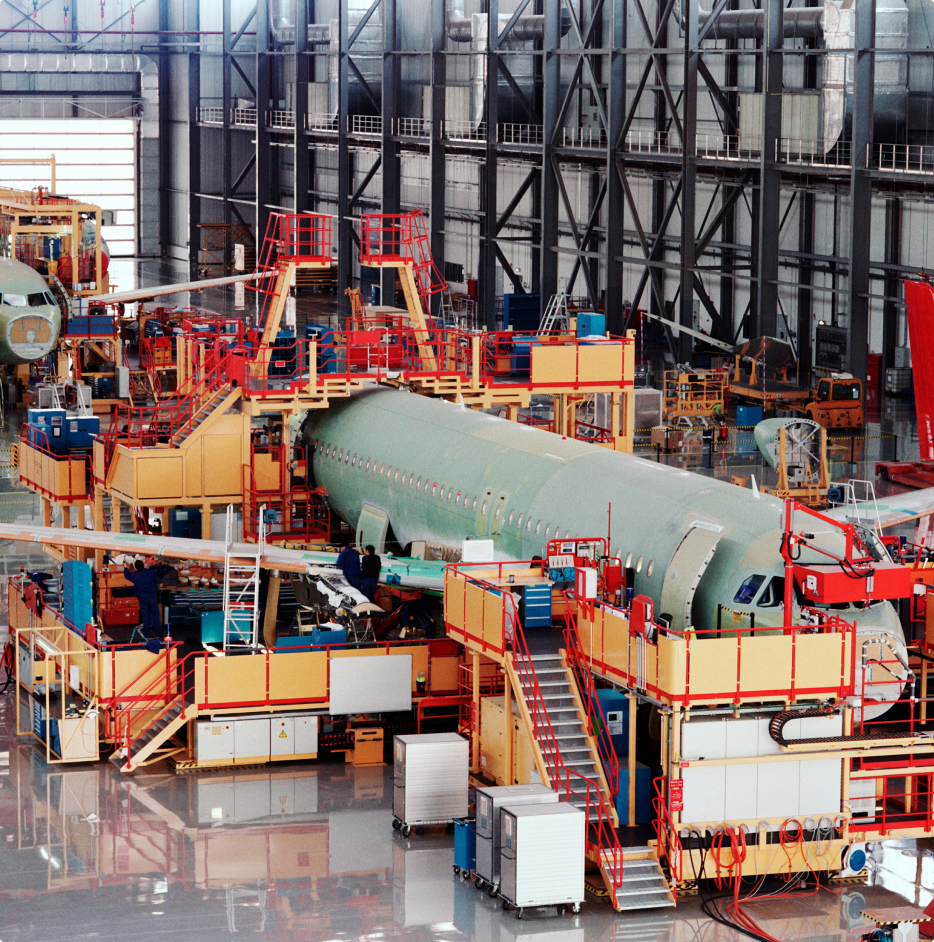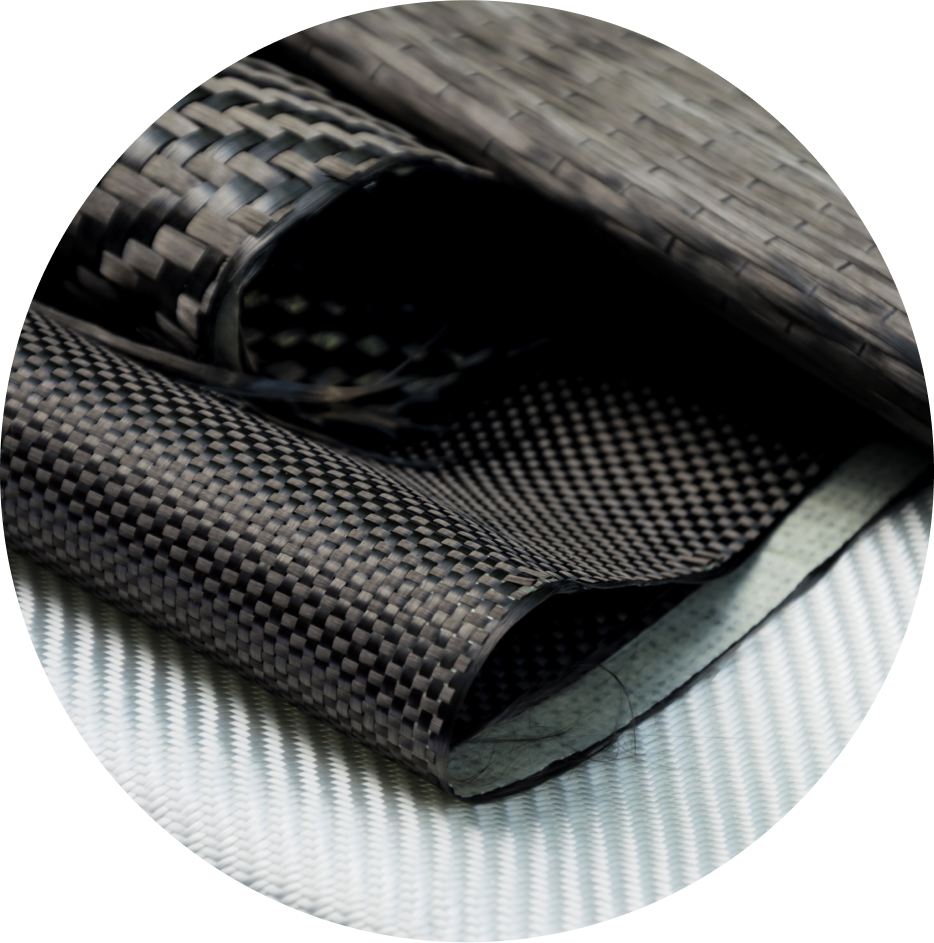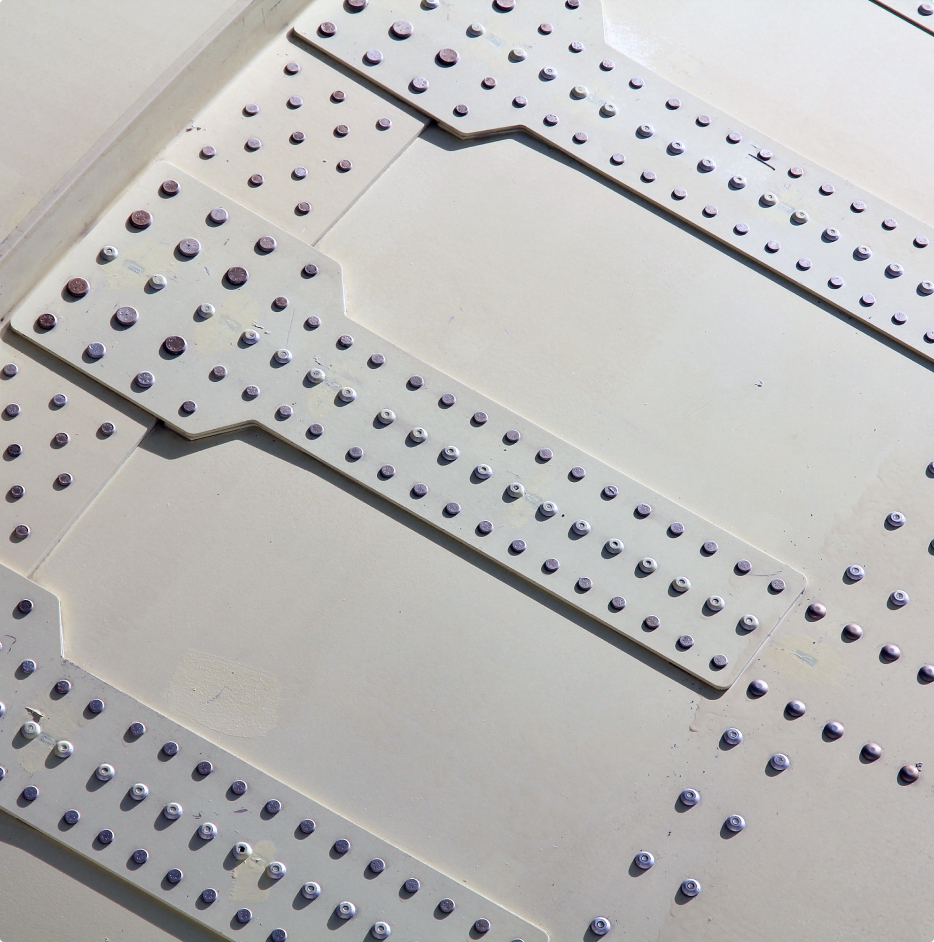Aerospace & defense.
With some of the best engineers in the industry, we lead innovation in aerospace and defense machinery.


Aerostructure Assembly
The engineers at Perellion have a broad range of experience designing assembly systems. These systems can be as simple as a tabletop-sized fixture to hold two pieces together for fastening, to something as complex as a factory full of actuated jigs to move and hold large parts in precise alignment for a final joining operation. We do this for commercial and defense aviation, space systems, and other industrial sectors.
The engineers at Perellion have extensive experience in bringing together individual components and turning them into completed aerostructures. This includes fixtures for attaching the internal bracketry such as stringers and frames to the outer wing and fuselage skin panels, to the much more sophisticated assembly jigs that bring these panels and other internal structures together to form complete wings and body sections.
Members of our team have been involved in developing sub component assembly systems for nearly all commercial airplanes being built today, as well as several rocket manufacturers and defense programs.
Final Assembly Lines
After the individual subassemblies are complete, the final assembly line(FAL), is where the large subassemblies are brought together into a completed aircraft or spacecraft. While many aerospace manufacturers outsource much of the subcomponent manufacturing to a network of sub-tier suppliers, the FAL is kept in-house almost universally. This is where the manufacturer ultimately gets to be in control of the final product.
Major aerostructure joins are at the core of every FAL, and Perellion engineers know all about the intricacies of that crucial step. Aerospace manufacturers turn to us to provide the expertise needed to lay out their FAL in an efficient and effective way that will enable them to meet their production rate targets while producing a consistent quality product each and every time. We are adept and experienced at implementing modern FAL technologies such as automated positioning equipment and integrated metrology solutions in our customers’ facilities around the world.




Composite Fabrication
In many cases, the old ways that served the aerospace industry so well for almost a century just don’t work anymore. The industry is rapidly moving toward using ultra-strong, ultra-lightweight composite materials instead of aluminum to build aircraft.
Stamping and stretch-forming are being replaced with automated layup and autoclaves. Rivets are being replaced with adhesives and highly-engineered fasteners—technologies designed specifically to complement carbon, fiberglass, and plastic parts. This change necessitates new approaches and fresh ideas.
New structural bonding techniques will speed up assembly and reduce manufacturing costs. Emerging material systems based on thermoplastics instead of conventional thermoset resins promise more damage-tolerant and easier-to-repair parts than the epoxy-based resins used today. These novel material systems will enable manufacturing methods currently reserved for automotive production to transition to demanding aerospace applications, such as welding and thermoforming. These advancements will be crucial as manufacturers pursue ever-increasing production rate targets, especially in emerging sectors such as electric aviation.
Perellion’s engineering team brings expertise to composite manufacturing at every level: from early-stage material testing, to automated process research and development, to full-scale production planning. Our team is prepared to join forces with our customers in pursuit of mastering the composite fabrication challenges of today and beyond.
Drilling and fastening
Many industries utilize a variety of fastening processes to join components and subassemblies together. In aerospace, the requirements for fastening processes are stricter than any other industry. Perellion engineers understand these challenges and know how to solve them.
The first half of the battle is making a hole. Just like in other industries, this is typically achieved through a combination of drilling, reaming, and countersinking. However, an aerospace-quality hole has to be accurately located on the surface of the part, often within ±.010 inches. Next, the hole must be drilled perfectly straight into the part, with an angle as close to perpendicular as possible. Once the cutting process begins, we focus on the geometry of the hole – the diameter, the depth of the countersink, and the surface finish, etc. Finally, the finished hole must be clean and dry, totally free of debris and residual lubricants.
The fastener itself is the other half of the battle. Automatically handling small fasteners without errors is challenging, and any hang-up in that process stops the entire machine. Once the fastener has made its way into the hole, we then have to do something with it. If it’s a rivet, we compress it with tens of thousands of pounds of force, which requires a powerful and rigid machine. If it’s a bolt, we spin a nut onto its threads or swage a collar onto its tail, requiring accurate and precise control of torque and force.
These requirements are difficult, but achievable. It takes the right machine, a well-refined process, and skilled engineers.

Get in touch
Have a problem that needs solving? Or just want more information? Let's discuss.
Phone:
+1 (425) 368-3368Address:
3616 S Rd # C1, Mukilteo, WA 98275
Email:
[email protected]Some of the cleanest and clearest reports I’ve seen.
Blue Origin Stress Analyst

